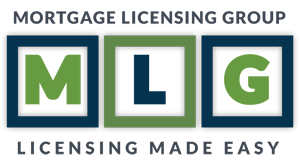Policy and Procedures: BSA/AML
 Every state requires a number of items to piece together the puzzle of a mortgage license. One of these items is a Policy & Procedure Plan. It is always a hope that a simple solution will satisfy these license requirements, however, this is not quite how to approach applying for a license. Each state sets a different standard of approach, raising the bar of expectation for company standards of approval.
Every state requires a number of items to piece together the puzzle of a mortgage license. One of these items is a Policy & Procedure Plan. It is always a hope that a simple solution will satisfy these license requirements, however, this is not quite how to approach applying for a license. Each state sets a different standard of approach, raising the bar of expectation for company standards of approval.
Since we all know each state is almost as different as various plant species, license requirements are almost as complex, but definitely easier than taxonomic rankings of kingdoms and species! One of these plans is the BSA/AML Plan:
The Banking Secrecy Act
Similar to genetic splicing, P&P’s are interchangeable and often seen side by side. An example, of a P&P splice, is one implemented by the BSA, or Banking Secrecy Act, also known as Currency and Foreign Transaction Reporting Act. The policy is implemented to actively detect potential money laundering & fraud. When suspicions of these activities arise, the financial institution is to proceed with notifying government agencies. Reporting a single transaction involving $10,000 in cash from a single customer.
In fact, any transaction involving a deposit of $5,000, or more, is a regulatory red flag of possible illegal activity from a client, bank, or broker. Some financial institutions even report issuing and redeeming gemstones, money orders, and other precious metals.
The US Department of the Treasury uses the Office of the Comptroller of the Currency [OCC] to conduct routine examinations of various financial institutions to ensure they are compliant with the BSA. Customer Identification Programs are an amended portion of the BSA, issued by The Patriot Act, and a part of the BSA Compliance Program. When a financial institution, such as banks and brokers, obtain deficiencies, or violate the compliance program of the BSA, notifications are sent to the Financial Crimes Enforcement Network – FinCEN, and the Office of Foreign Assets Control – OPAC. This list of violators are sent tools, such as checklists, by US Law Enforcement, in order to strengthen financial activities.
The Anti-Money Laundering Laws
The Anti-Money Laundering [AML] Laws add another half to the policies implemented by the BSA. The AML policy is the other half of the BSA P&P splice, and is enforced to prevent, detect, and report money laundering activities similarly to that of the BSA policy. The AML adds a few refinements to better ensure regulatory standards are met.
When implementing the AML aspect of a policy, an officer of the company must be designated to manage the operations of the BSA/AML plan. Implementation of employee training is an requirement, and must be given to all staff handling any loans. Every year, the BSA/AML training program receives an external audit after staff individually signs documents, indicating completion of the annual program.
BSA/AML policies will keep your company safe from suspicious financial activity and help keep your company compliant with state specific regulatory expectations. Depending on whether you are applying for a mortgage broker license, or a mortgage lender license, and depending the state in which
you are hoping to be licensed, the BSA/AML Policy & Procedure requirement, may be just what you need for your company approval.
Many eastern states list the BSA/AML policy as part of the state specific license requirements. For more information on whether or you not you will need to acquire this policy as part of your application process, contact our Licensing Specialist at The Mortgage Licensing Group today!
The Mortgage Licensing Group, Inc. is a full-service mortgage licensing firm headquartered in Southern California that is recognized throughout the industry as an experienced and reliable service provider. Established in 2006, our company has been on the forefront of the ever-changing rules and regulations, helping alleviate the often daunting task of meeting the diverse state licensing requirements for our clientele.

